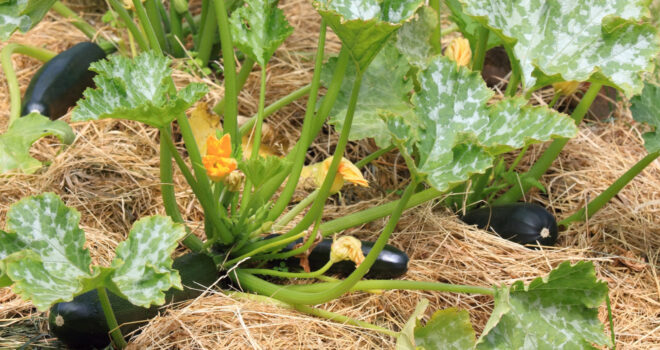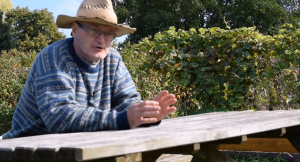What if you could grow your own vegetables without all the work? Didier Helmstetter decided that his challenge was not such a crazy idea after all, developing a low-key gardening technique based on hay mulching, which he decided to call phenoculture.
The term phenoculture, which was invented by Didier Helmstetter, comes from the word faenum, meaning “hay” in Latin. The French agronomist wrote a book called “Le potager du paresseux” (The sloth’s kitchen garden), in which he shares his knowledge about agroecology.
But where does the hay come in? It’s his secret weapon, which ensures that his garden grows, without too much of an effort on his part.
Why cover the soil?
Hay mulching has 4 important benefits:
1. It prevents weeds from growing by depriving them of light. This significantly reduces the tillage: no more digging over, grubbing or hoeing!
2. It protects the soil against external stress factors, mainly linked to the climate, by:
- Preventing the evaporation of water and the drying out of the soil due to prolonged sunshine, leaving more water for the organisms in the soil and for the plants.
- Reducing the shock caused by raindrops during the rainy season. It prevents a crust from forming, which blocks the air flow and hinders the biological activity of the living organisms in the soil.
3. It does away with any dependence on mineral or chemical fertilisers. Hay is an organic material, which will supply plants with the food they need to grow as it decomposes.
4. It provides soil organisms with the organic material they need for their survival. These organisms can then structure the soil but also degrade organic matter, producing the nutrients plants need.
Nothing else but hay!
There are plenty of alternatives: with a tarp, bark, wood chips, straw… But Didier Helmstetter insists that hay is the best option. This grass is mowed when the flower begins to form, after which it is dried and rolled up to form haystacks.
Hay contains nitrogenous substances, seed, cellulose and soluble sugars, which soil organisms loves to feast on. It gives them just the right amount of nitrogen, carbon, and energy to live on.
The decomposed hay provides all the nutrients plants need to grow. In other words, hay is a natural fertiliser that does the job for you.



 Tomato
Tomato  Celery
Celery  Vegetable garden: growing celery stalk
Vegetable garden: growing celery stalk 










